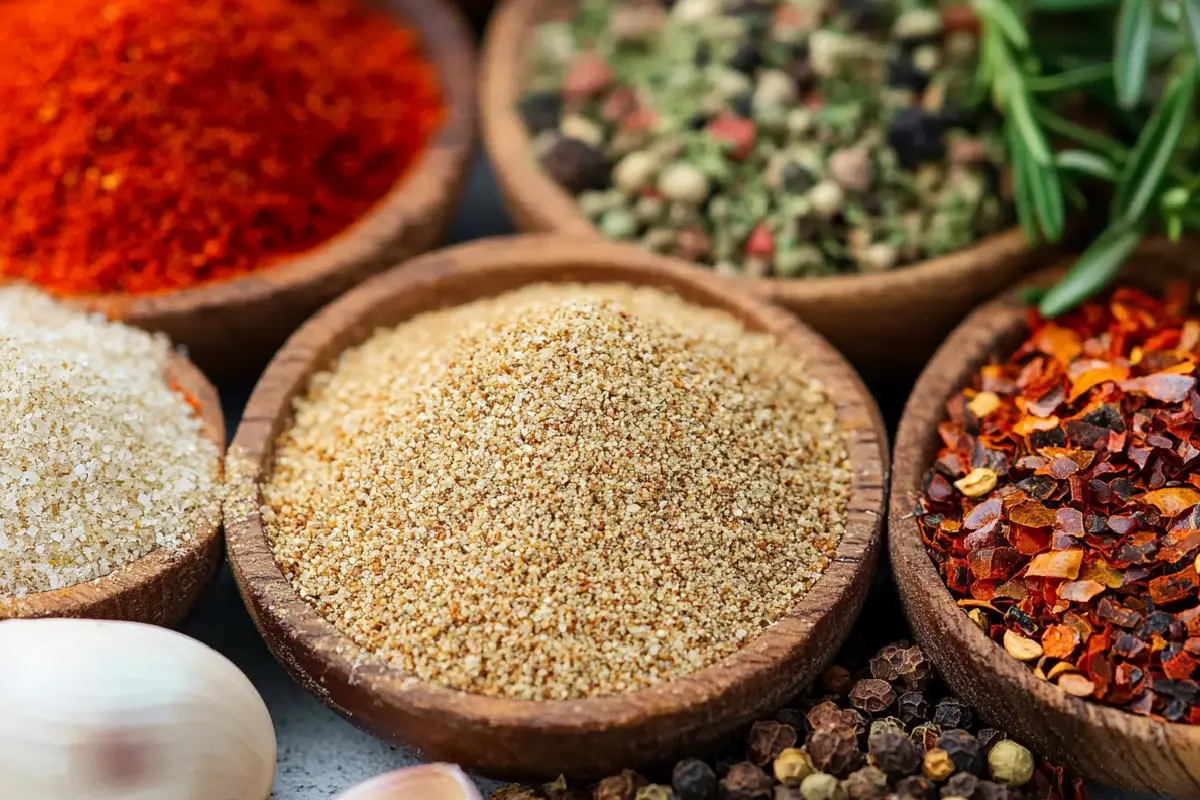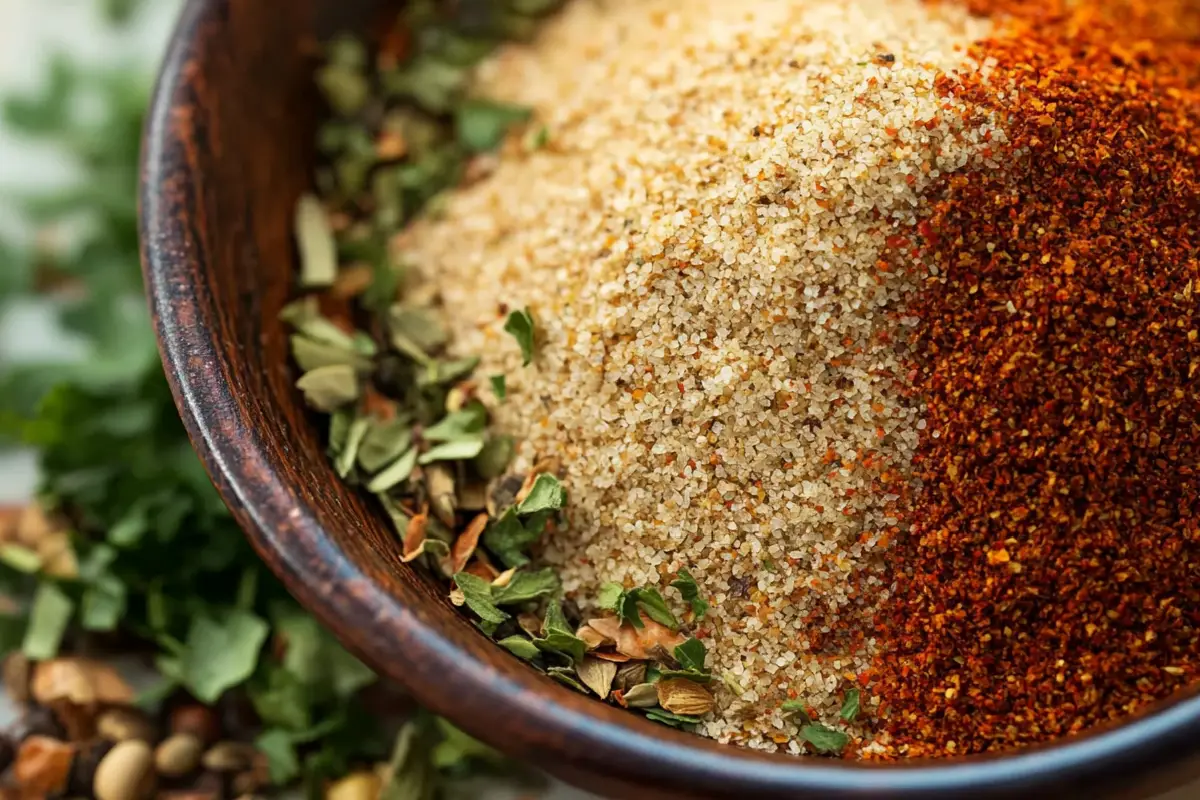When crafting the perfect beef stew, herbs play a vital role in enhancing the dish’s rich, savory flavors. Whether you’re making a traditional beef stew or experimenting with new ingredients, choosing the right herbs can elevate your dish to new heights. The right herbs not only deepen the flavor but also provide the aromatic backdrop that makes beef stew so comforting and delicious.
This comprehensive guide will explore everything you need to know about the best herbs for beef stew, including which ones to choose, when to add them, and how to pair them with other flavors. By the end, you’ll have all the tips you need to create the ultimate beef stew.
Traditional Herbs for Beef Stew
Several classic herbs have long been associated with beef stew recipes. These herbs are known for their ability to complement and enhance the hearty ingredients in the dish. Let’s take a closer look at some of the most common ones:
- Rosemary: This strong, pine-like herb pairs beautifully with beef, infusing the dish with an earthy and slightly peppery aroma. It’s a bold herb, so be cautious not to overuse it.
- Thyme: Thyme’s subtle, earthy flavor is a perfect match for the richness of beef. It works best when simmered slowly, releasing its aromatic oils over time.
- Bay Leaves: Bay leaves are essential in most traditional beef stew recipes. They add a deep, savory note that becomes more complex the longer they simmer.
- Parsley: Often used as a garnish, parsley adds a fresh, bright note that helps balance out the heavier flavors of the stew.
For an easy side dish to pair with your stew, consider these cheesy mashed potatoes—the richness of the potatoes works perfectly with herb-infused beef stew.
The Best Herbs for Beef Stew: A Detailed Breakdown
Now that we’ve introduced the traditional herbs, let’s dive deeper into each one and explore how they contribute to the overall flavor of your beef stew.
1. Rosemary
- Flavor Profile: Rosemary is one of the boldest herbs you can add to beef stew. Its flavor is often described as woody or piney, with a hint of citrus. It stands up well to the deep, rich flavor of beef.
- How to Use: Given its strong flavor, rosemary should be used sparingly. Fresh rosemary can be chopped finely or added as whole sprigs to infuse the stew while it cooks. If using dried rosemary, add it early in the cooking process to allow the herb to rehydrate and release its oils.
- Cooking Tip: Try adding rosemary at the beginning of the cooking process and removing any large sprigs before serving.
2. Thyme
- Flavor Profile: Thyme is much milder than rosemary but no less important. It has a subtle earthy flavor with hints of mint and lemon, which make it ideal for slow-cooked dishes like beef stew.
- How to Use: Thyme can be used fresh or dried. Fresh thyme is best tied in a bundle and added whole, while dried thyme can be sprinkled into the pot early on.
- Cooking Tip: Adding thyme early in the cooking process allows its flavor to mellow and blend into the stew’s broth. The long simmer will help release all the herb’s subtle oils.
3. Bay Leaves
- Flavor Profile: Bay leaves are essential for infusing a slow-building depth of flavor. Their subtle taste is often described as slightly floral or herbal, but it’s not overpowering, making them an ideal background note in a stew.
- How to Use: Use whole bay leaves, typically one or two, depending on the size of your pot. They should simmer with the stew for the entirety of the cooking process and be removed before serving.
- Cooking Tip: The longer bay leaves simmer, the more flavor they release. Be sure to give them time to fully infuse the broth.
4. Parsley
- Flavor Profile: Parsley has a fresh, slightly peppery flavor that is often used to balance the richer components of a dish. It is commonly used as a garnish in beef stew to provide a final touch of brightness.
- How to Use: Finely chop fresh parsley and sprinkle it over the stew just before serving. It’s typically not cooked in the stew, as its flavor fades quickly.
- Cooking Tip: For best results, use fresh parsley rather than dried. Dried parsley lacks the vibrant flavor and freshness of the herb in its natural state.
For a great recipe that incorporates these herbs seamlessly, check out this beef stew seasoning recipe, which outlines how to achieve the perfect flavor balance.
How to Choose the Right Herb for Your Beef Stew

Choosing the right herbs for your beef stew depends on the type of flavors you want to highlight. Here’s how to tailor your herb selection based on the style of stew you’re making:
- Wine-Based Stews: Beef stews made with red wine, such as boeuf bourguignon, are enhanced by rosemary and thyme. The earthy notes of these herbs complement the richness of the wine and beef.
- Tomato-Based Stews: If your stew is tomato-based, Mediterranean herbs like oregano, basil, and parsley are great additions. These herbs add a slightly sweet and tangy flavor that balances the acidity of the tomatoes.
- Traditional Beef Stew: Stick with classic herbs like thyme, bay leaves, and parsley for a simple, traditional stew. These herbs enhance the savory notes of the beef without overpowering the dish.
Whether you’re using fresh or dried herbs, each will affect the final taste differently. Fresh herbs tend to offer a more vibrant flavor, while dried herbs are more concentrated. When using dried herbs, remember to use about a third of the amount you would use for fresh.
Cooking Techniques to Maximize Herb Flavor
To truly maximize the flavor of your herbs in beef stew, it’s essential to use the right cooking techniques. Here are some tips on when and how to add your herbs to extract the most flavor:
- Sautéing Herbs Early: Sautéing herbs like rosemary and thyme at the beginning of the cooking process helps release their essential oils, which infuses the base of the stew with flavor from the start.
- Adding Fresh Herbs Toward the End: For herbs like parsley, which lose their flavor quickly during cooking, it’s best to add them just before serving. This keeps their fresh, bright flavor intact.
- Dried Herbs Need Time: If you’re using dried herbs, add them early in the cooking process. Dried herbs take longer to rehydrate and release their flavor, so they benefit from the long cooking time.
For a different take on flavoring beef, check out this smoked meatloaf recipe, which uses a blend of herbs to create a savory, smoky taste.
Other Flavor Enhancers for Beef Stew
While herbs are the star of the show in beef stew, you can also use other flavor enhancers to bring out the best in the dish. Here are a few ingredients to consider:
- Garlic: Garlic adds depth and a slightly sweet flavor that complements the herbs. Add minced garlic early in the cooking process to allow its flavor to mellow.
- Smoked Paprika: This spice adds a hint of smokiness that pairs well with beef and herbs like rosemary. It also enhances the stew’s color.
- Pepper: Freshly cracked black pepper intensifies the savory flavors in the stew and works well with most herbs.
Using a combination of herbs and spices will result in a more complex, flavorful stew that hits all the right notes.
Common Mistakes to Avoid When Using Herbs in Beef Stew
Even the most experienced cooks can make mistakes when using herbs. Here are some common pitfalls to avoid:
- Overuse of Strong Herbs: Strong herbs like rosemary can quickly become overpowering if used in large amounts. It’s always best to start with a small amount and adjust as needed.
- Adding Herbs at the Wrong Time: Softer herbs like parsley should be added at the end of cooking, while hardier herbs like rosemary and thyme can be added earlier.
- Using Too Many Different Herbs: While it’s tempting to use a variety of herbs, sticking to just a few complementary ones will prevent the flavors from becoming muddled.
By avoiding these mistakes, you can ensure that your stew has a well-balanced and harmonious flavor.
Pairing Beef Stew with Sides That Highlight Herb Flavors
To complete your meal, it’s important to choose sides that complement the herb flavors in your beef stew. Here are some great options:
- Crusty Bread: Perfect for soaking up the flavorful broth, crusty bread is a classic side for beef stew.
- Mashed Potatoes: The creamy texture of mashed potatoes is an ideal match for the rich, herb-infused stew. Try these cheesy mashed potatoes for an extra indulgent option.
- Roasted Vegetables: Vegetables like carrots and parsnips roasted with herbs like rosemary or thyme complement the stew and add another layer of flavor to the meal.
FAQs About Herbs for Beef Stew
What is the best herb to use in beef stew?
Rosemary, thyme, and bay leaves are the most popular herbs used in beef stew, each offering bold, savory flavors.
Can you use fresh herbs in beef stew?
Yes, fresh herbs can be used in beef stew. However, they should be added later in the cooking process to retain their fresh flavors.
When should I add herbs to beef stew?
Hardier herbs like rosemary and bay leaves should be added early, while softer herbs like parsley are best added right before serving.
What herbs pair well with red wine in beef stew?
Rosemary and thyme are ideal herbs for stews made with red wine, as they enhance the richness of both the wine and the beef.
Conclusion: Elevate Your Beef Stew with the Right Herbs

By mastering the art of choosing and using the right herbs, you can transform a simple beef stew into a rich, flavorful dish that stands out. Whether you stick with traditional herbs like rosemary and thyme, or experiment with different combinations, understanding how and when to add these herbs is key to achieving the perfect balance. Pair your stew with complementary sides like mashed potatoes, and avoid common mistakes to create a meal that’s sure to impress. Happy cooking!

